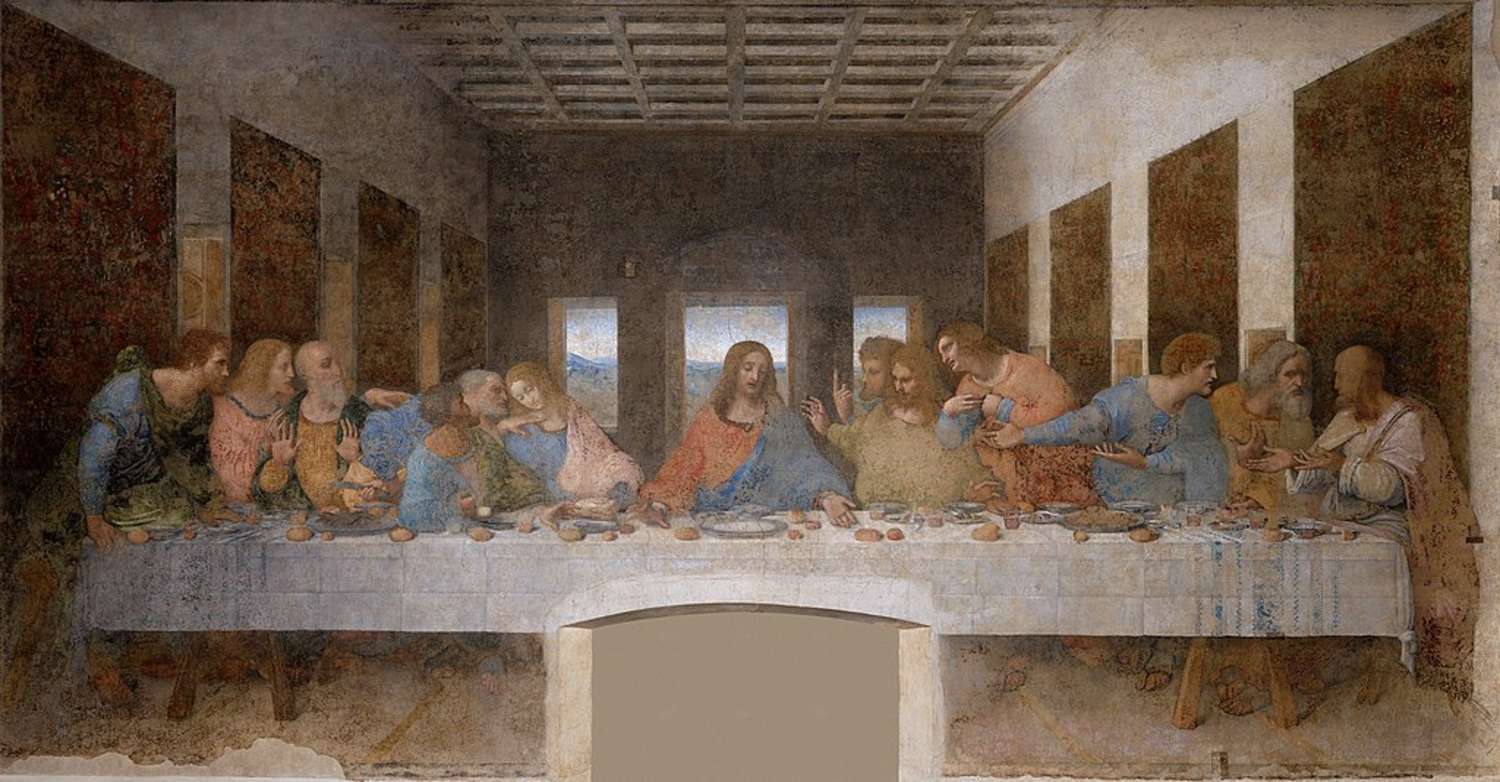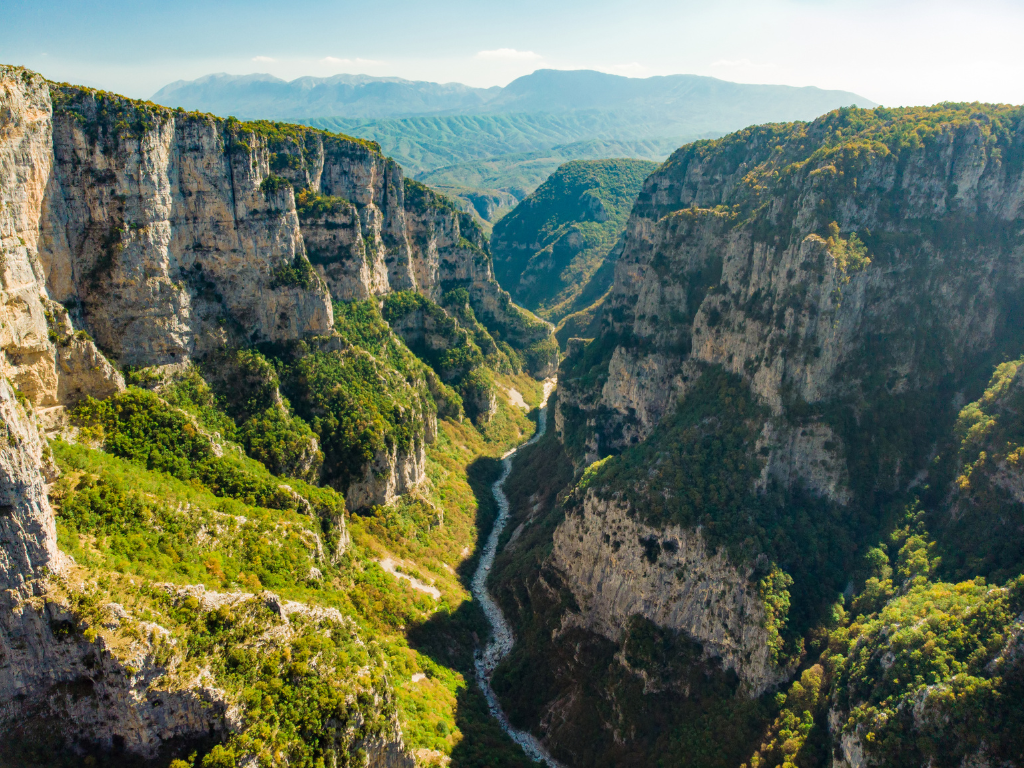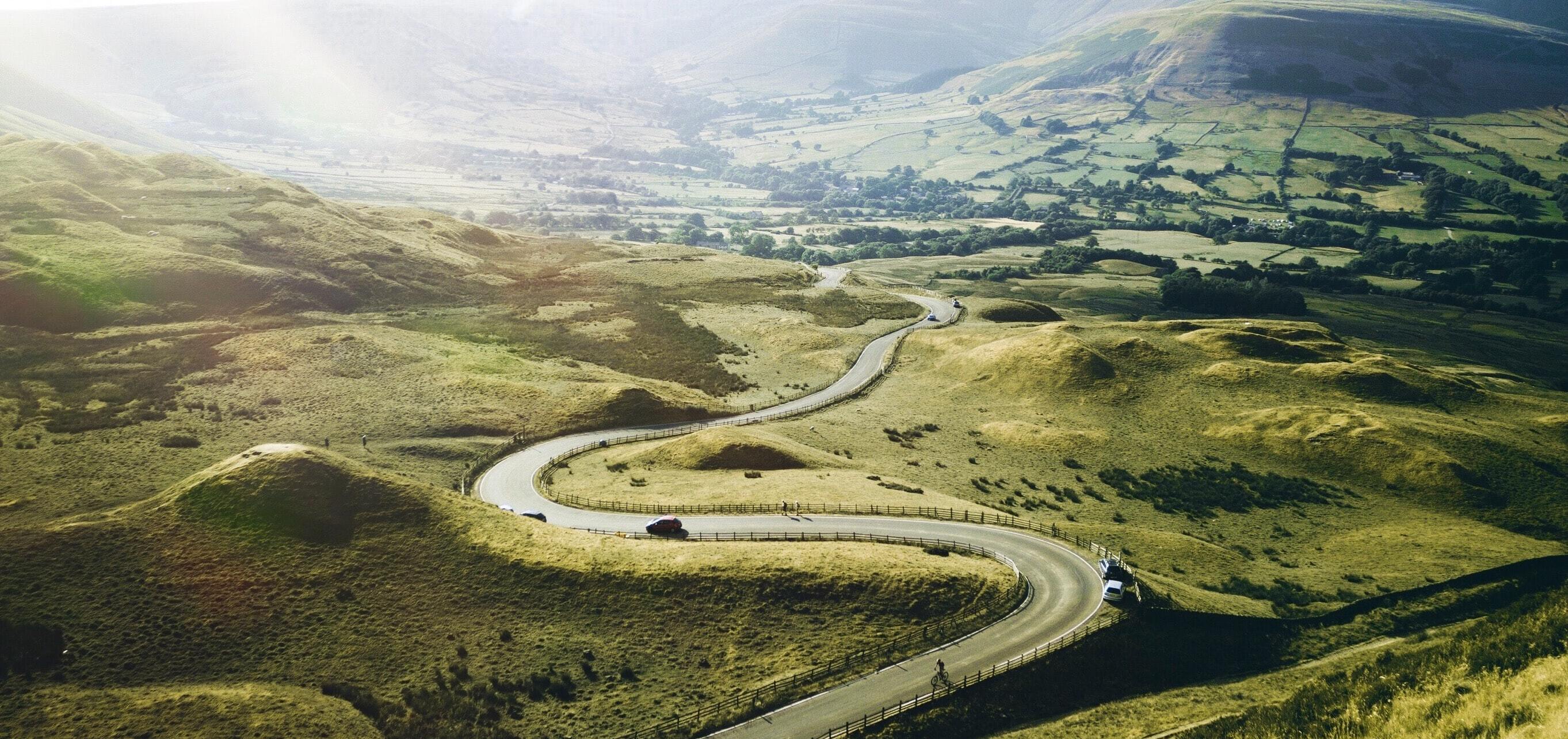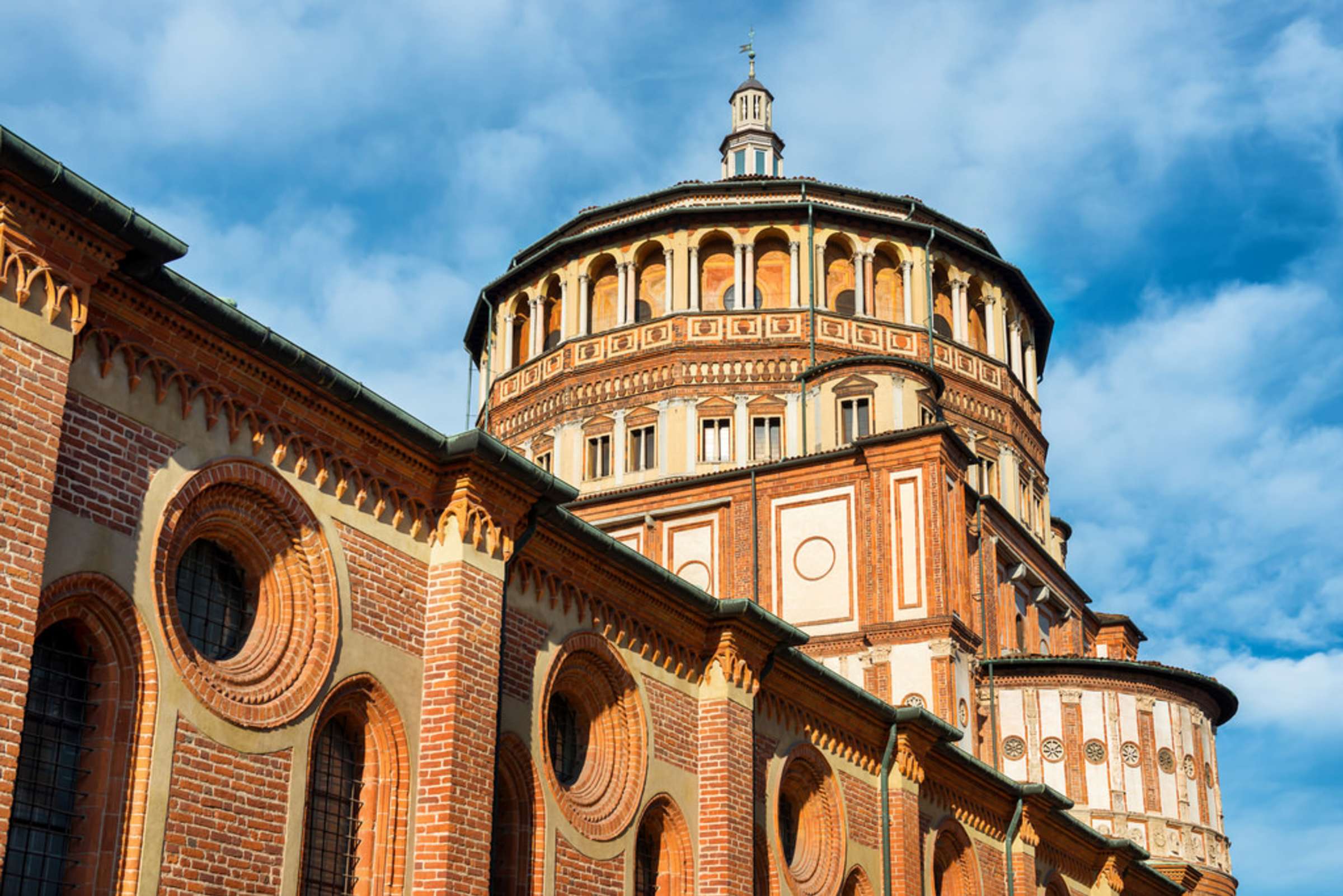8 Surprising Facts About Da Vinci's The Last Supper

Da Vinci's The Last Supper
The enigmatic painting done by none other than Leonardo da Vinci stands to this day as one of the most recognized and beloved works of art in history. Aside from the Mona Lisa, the biblical portrayal of Jesus’ betrayal is da Vinci’s most iconic piece. With its harmonious composition, mysteriously complex subject matter, and intense emotional expression, it’s not difficult to see why we’re drawn to this painting, why people from around the world flock to the beautiful Santa Maria delle Grazie monastery in Milan to behold this treasure. From its inception in 1495 through World War II, the painting has withstood a surprising level of destruction in order for us to be able to tell its tale. We’ll give you the rundown on some facts you didn’t know about The Last Supper, and maybe you’ll be inspired to join us on our in-person walking tour all about the painting and da Vinci in depth.
The Last Supper's History
Da Vinci’s Talents
‘He usually [...] leaves early in the morning to get on the scaffold, because the Last Supper is quite high off the ground, he often, I say, from the rising sun until the evening twilight ever takes the brush out of his hand, but forgetting eating and drinking, without ceasing to paint’.
— Matteo Bandello, Novella LVIII
According to Laura Benitti - our Milan expert and guide - Matteo Bandello was the court poet in the second half of the 15th century, the Golden Age of Milan. His observation of the legendary painter was astute. Leonardo da Vinci was a passionate, multi-talented, and hardworking genius. It was the Duke of Milan Ludovico of House of Sforza, the ruling royal family of the city, who personally invited Leonardo da Vinci to work for the family. As a court painter, da Vinci was well-regarded and had a demanding schedule full of creative and engineering projects for festivals, architecture, military, and more. He was consulted for much more than his artistic ability, especially during his time with the Duke’s family.
Fun fact: da Vinci was around forty-three years old when he painted The Last Supper, and around fifty-one years old when he painted the Mona Lisa! Tireless in his ambition, there was no peak period of talent for our dear Leonardo.
Learn with Milan expert, Laura Benitti, on a private walking tour.
The Last Supper Background
Between 1463 and 1483, the royal family built the Dominican monastery, Santa Maria delle Grazie (Holy Mary of Grace). It was dedicated to the Graces so they may ward against the plague. Soon after, the monastery was transformed with the addition of a grandiose tribune to house the Sforza family mausoleum. Donato Bramante, who planned St. Peter’s Basilica in Vatican City, executed this magnificent architectural addition.
It seems the Sforza family knew exactly how to keep their bold and wealthy reputation throughout the centuries. They knew that this beautiful monastery, built by another legend of the Renaissance, was a worthy dwelling place to hold a pivotal piece of work such as The Last Supper.
Residing in the Refectory of the Convent, the cafeteria where monks came together to eat, the renowned work of art depicts the biblical story of Jesus’ betrayal by the Judas, one of the twelve Apostles. Specifically, the painting shows the reaction of the Apostles seconds after Jesus tells them that one of them will betray him before sunrise.
This topic was a pretty popular visual choice for the refectory walls of monasteries, convents, and other holy places in 15th-century Italy, but da Vinci’s version outlasted and outshone all others. His version of the Last Supper revolutionized its portrayal through thoughtful observations of human emotion.
From left to right, the Apostles are: Bartholomew, James the Lesser, Andrew, Peter, Judas Iscariot, John, Thomas, James the Greater, Philip, Matthew, Jude, and Simon. Each face of the Apostle has a unique and dramatic expression to Jesus’ news of what’s to come. Da Vinci very expertly illustrates the whole range of emotions — fear, terror, unbelief, anger, desperation — through the gesture attitude, and gaze of each holy figure. The Renaissance artist referred to these human characteristics as “I moti dell’animo”, or “the movements of the soul.”
Monks enjoyed congregating and eating with the painting most likely because they felt closer to Jesus during his final moments of peace. Another reason they may have enjoyed eating at the Santa Maria delle Grazie refectory is that the sheer depth, and perspective of the painting is so precise that the hall may have even seemed like an extension of the Last Supper. Maybe they felt as if they were among the Apostles, with the same aghast range of emotions, trying as they might to warn Jesus.
8 Facts About The Last Supper
1. Da Vinci used a hammer and nail to get the perspective just right.
Perhaps one of the greatest examples of one-point perspective, every angle of the painting ensures that you look directly at the focal point: Jesus. The harmony, symmetry, and perspective all work together so your eyes know exactly what’s important here. In order to achieve this effect, the artist drove a nail into the wall by the figure’s head from which he then strung thread in different directions. This allowed him to see the room’s perspective and paint certain aspects to draw your attention to Christ. Whether or not da Vinci used this technique for an added layer of symbolism, it significantly dramatizes the piece and leaves us with a striking result.
A few symbols and meanings in the painting
- Spilling salt
- Barely recognizable in this weathered original is an overturned container of salt right next to Judas’ right arm. In the 16th century, spilled salt was known to be a bad omen.
- Jesus’ Portrayal
- While the twelve disciples frantically react to his appalling news, Jesus sits calmly at the center. The artist draws his body as an equilateral triangle, a harmonious shape connected to the divine.
- Phillip’s Question
- In the biblical story, Philip, three figures to the right of Jesus, asks “Lord, is it I?” You can see Phillip pointing to himself. Jesus responds by saying, “ He that dippeth his hand with me in the dish, the same shall betray me.” When you gaze at the hands reaching for food at the table, it is Jesus and Judas. Jesus reaches for wine and Judas reaches for bread.
- Thomas’ Finger
- One figure to the right of Jesus is Thomas who holds out his index finger. This is an allusion to the part of the story when Jesus rises from the dead. Thomas, distrustful that the son of God is suddenly alive again, pokes a finger to his side.
- Peter’s Knife
- Three figures to the left of Jesus is Peter, who will later wound a soldier’s ear to try to stop Jesus from being arrested.
- Judas
- Of the twelve Apostles, Judas is the only one whose face is almost completely hidden, shrouded by shadows. This is especially curious in a painting that is driven by the emotions of each face. Think about then in relation to da Vinci’s strive to illustrate the “movement of the soul.”
- While one hand reaches for bread, the other hand clutches a purse full of money, another allusion to when he pays thirty pieces of silver to reveal Jesus’ identity to his enemies.
There are so many other symbols in this painting rife with allegory and allusion. To learn the rest, you’ll have to hop on tour with our experts in Milan.
2. The Last Supper is not a fresco.
While many believe that the original painting was a fresco, the technique that Leonardo da Vinci decided to use was actually much more unusual. According to our Milan expert, Giacomo, it’s difficult to make changes on a fresco painting, and as you can see from his incredible amount of detail, da Vinci needed time. The unusual method that he chose to use instead caused the painting to break loose only two decades after he began. Learn more about this technique with Giacomo the next time you're in Milan.
3. This masterpiece has been painted, repainted, tampered with, and almost destroyed countless times.
Ironically, the painting method that da Vinci chose to save him time actually cost him time. He had to repaint the refectory wall countless times. Other successive events in history degraded the painting as well. In 1652, the monastery built a door along the wall that the painting hung and cut some details, including Jesus’ feet.
5. The Refectory was also used as a stable
The Last Supper weathered even more damage when Napoleon and his troops converted the space into a stable for horses when he invaded Milan in the 18th century.
6. Allied forces during WWII bombed the monastery, almost completely destroying the painting.
It keeps getting worse, doesn’t it? Despite all of history’s hardships, the painting remains intact throughout it all.
7. The person to the left of Jesus is not a woman (or doubling as Mary Magdalene) — it’s Saint John.
Many mistakenly believe that Saint John is a woman in the painting. Da Vinci likely gave him a more feminine and youthful glow based on the ideas of Renaissance society.
8. Three early copies of the painting also exist.
Though unconfirmed, the three copies that exist of the Last Supper are thought to have been painted by Leonardo da Vinci’s assistants. The one by Giampietrino resides in the Royal Academy of Arts in London, and was the main guide for the restoration of the original painting. The others were replicated by Andrea Solari and Cesare da Sesto. Their versions are in the Leonardo da Vinci Museum in Belgium and the Church of Saint Ambrogio in Switzerland, respectfully.
It’s no wonder that there are a plethora of books, theses, and lectures dedicated to this one painting. There’s just so much to cover! Thankfully, we have our experts to guide you to what’s most important and what’s most interesting - in person and online! Laura Benitti and Giacomo Zavatteri are our top scholarly guides on stunning The Last Supper masterpiece, and we couldn’t have written this post without them.
Check out more art history online with Context and find your next favorite painting.
Other blog posts you may enjoy:
Even More from Context
Keep Exploring













